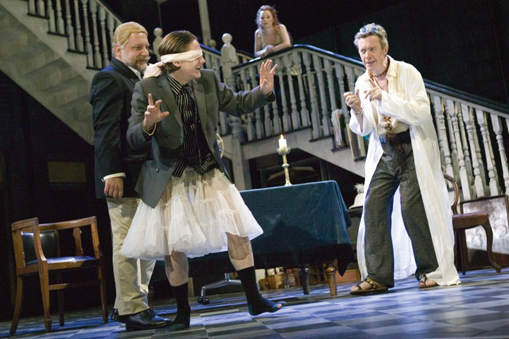National Video Archive of Performance
We still follow the guidelines that were drawn up, especially those that recognised crucial differences between recording for television and recording for an archive:
• Close-ups, beloved by television, don’t work for a stage production: you see too much makeup, too much artifice. Above all, a stage actor must project, and this sounds and looks strange if the camera is too close
• Television loves fast editing. For an archival recording, edits should only occur when necessary – e.g. a character is about to move out of the frame of one camera, necessitating a cut to a wider shot to contain the action. There will be far fewer shots in an archival recording than in a feature film or television version.
• For those who object to the notion of an edited recording, or a technician wanting to check the lighting changes or a stage manager wanting to see the exits and entrances, the unedited wide shot should also be recorded on tape and made available for viewing if required.
• Only the best crews would be used, with experience of working in theatres
The issue of conservation is central to any archive. Our o.b. style recordings are made using Digibeta tape, which has long been the BBC’s archiving format and stored in climate controlled conditions. The constant evolution of formats is expensive and time-consuming but we are in the process of ditigising our masters and viewing copies onto a server, while also preserving the Digibeta masters.

The Alchemist starring Simon Russell Beale, Lesley Manville and Alex Jennings, recorded at the National Theatre in 2006 (image copyright V&A)
These then are the guidelines we have established after 15 years of experience. It is widely accepted that our archival recordings are as good as possible, when circumstances allow, and we wanted to celebrate this with our 200th recording. Six months before it was due to transfer to London, the RSC, Ian McKellen and the company gave their permission for us to record King Lear. Then we came up against what is often our biggest obstacle: acquiring the appropriate seats for the cameras. We have to buy up to ten seats for each camera to ensure that no-one in the audience is behind or beside one. This often means we have to reserve seats before public booking opens, to get large blocks of seats in the right places. King Lear was to transfer from Stratford to the New London Theatre in Drury Lane, which was being refurbished and the auditorium reconfigured into a thrust stage. Despite being six months ahead of the game, because the seats were to be taken out and not replaced until weeks after booking had opened (it was expected that the theatre would sell out within days) we were unable to select our camera positions (in an auditorium without seats) and so we were unable to record King Lear.
 Learning on Screen
Learning on Screen